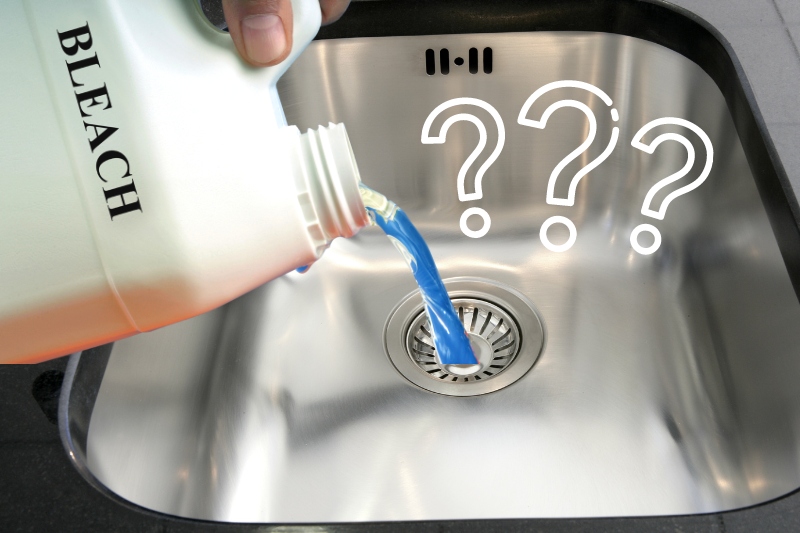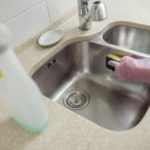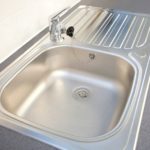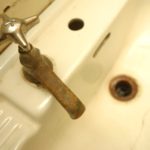Stainless steel is one of the most popular materials to use around the home. Its sleek, durable surface is perfect for giving a modern look to your countertops, appliances, and other household fixtures.
Unfortunately, maintaining the sparkling clean look of stainless steel can be challenging, as certain cleaning products will damage the material and leave behind stains.
Fingerprints, watermarks, and grime will accumulate over time and must be removed to maintain the appearance of the stainless steel.
Many people reach for bleach-based products to remove this build-up due to their superior disinfecting abilities, but can you use bleach on stainless steel? Read on to find out!
Can Bleach Ruin Stainless Steel?
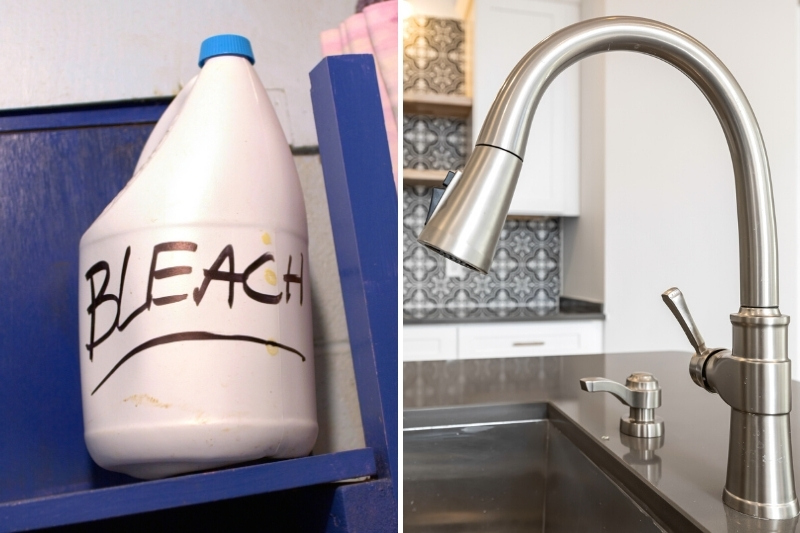
Unfortunately, bleach can ruin stainless steel.
One of the main selling points of stainless steel is that it has a protective barrier that prevents tarnishing.
This barrier is formed when chromium in the stainless steel reacts with the oxygen in the air to form chromium oxide.
However, harsh chemicals like bleach break through this protective barrier, allowing rust and pit marks to form on the surface.
Some forms of stainless steel contain a higher concentration of molybdenum which can stop this corrosion from occurring.
Nevertheless, this is typically not the case, so it is generally best to avoid using bleach on this material just to be safe.
It isn’t just pure bleach that you need to watch out for! Bleach is often found as a core active ingredient in store-bought cleaners, so you must check the label on these products before using them on stainless steel to prevent damage.
Although the chemicals will be diluted, they will still cause noticeable damage to stainless steel surfaces.
How Do You Reverse Bleach Damage on Stainless Steel?
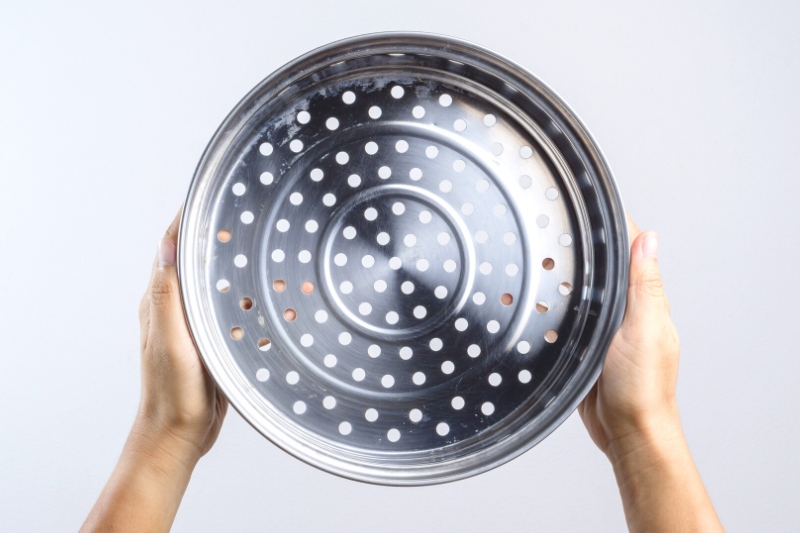
When bleach is used on stainless steel, the surface appears stained. However, this discolouration is actually permanent damage to the surface caused by corrosion and is incredibly hard to reverse.
If you accidentally apply bleach to a stainless steel surface, your first port of call should be to wash it off as quickly as possible. This will help to reduce the damage caused.
However, if the corrosion has already occurred, you’ll need to try and improve the appearance of the mark by scrubbing away some of the damaged layers of stainless steel.
Removing the strains allows the chromium found underneath the corrosion to make contact with the oxygen in the air, forming a protective barrier once more.
The best method to remove this damage will vary depending on if the discolouration is minor or more significant.
Removing minor patches of corrosion
- Step 1: Create a cleaning paste – Combine bicarbonate of soda with a bit of water to create a cleaning paste. Make as much paste as you need to cover the corroded areas, but ensure the ratio is always two parts bicarbonate to one part water for the best results.
- Step 2: Scrub the damaged area – Use a soft cloth to rub the paste into the discoloured area. Ensure you scrub in the same direction as the grain in the stainless steel to prevent further damage and scratches from forming.
- Step 3: Remove the residue – Once you’re confident that all the corroded metal has been removed, thoroughly wipe the surface clean using a damp cloth. Then, use a microfibre cloth to thoroughly dry the stainless steel so that watermarks don’t form.

Removing deep patches of corrosion
- Step 1: Coat the surface in bicarbonate of soda – Use a damp cloth to lightly wet the damaged parts of the stainless steel. Then, sprinkle the surface with an even layer of bicarbonate of soda, and leave the powder to sit for roughly 1 hour.
- Step 2: Scrub the corroded area – Use a soft brush to scrub at the corrosion. Once again, ensure you work with the grain of the stainless steel to avoid any more damage and unsightly scratches on your stainless steel surfaces.
- Step 3: Remove the residue – Wipe the stainless steel with a damp cloth to remove any residue from the surface. Use a dry microfibre cloth to remove any leftover water to prevent watermarks from clouding the surface.
When using either of these methods, avoid using an overly abrasive scrubber such as steel wool. These are likely to further damage the stainless steel and leave behind pit marks.
Any microparticles that the steel wool leaves behind will also rust, causing patches of the metal to turn brown.
What’s the Best Cleaner for Stainless Steel?
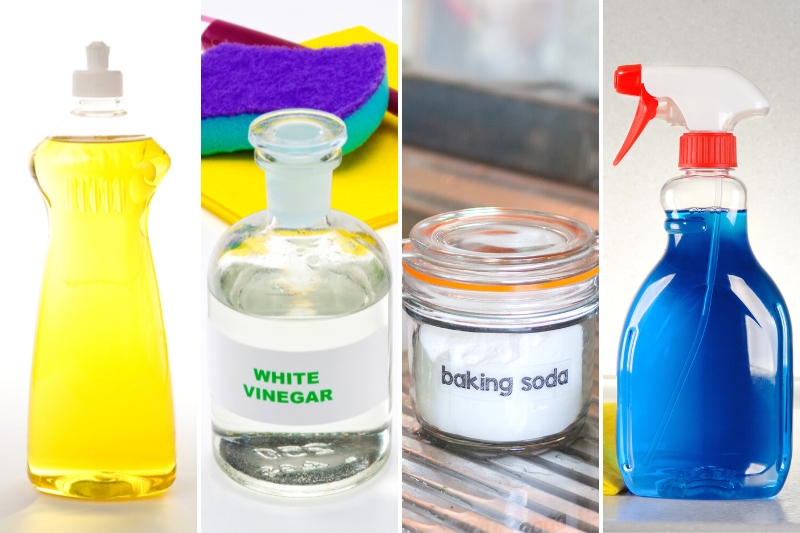
So, bleach is a definite no-no when it comes to stainless steel! But what cleaning products can be used to give an effective clean?
Thankfully, there are a wide variety of other cleaners that you can safely use. Some of the most effective options for cleaning stainless steel include:
- Washing-up liquid: A mild washing-up liquid is one of the safest and easiest things you can use to clean stainless steel. Simply mix a few drops of the soap with warm water and then use a cloth to wipe down the surface.
- White vinegar: For a slightly stronger cleaner, you can use a solution of diluted white vinegar. Mix equal parts vinegar and water in a spray bottle, apply to the stainless steel, and then use a soft cloth to wipe down the surface. Rinse thoroughly once done.
- Bicarbonate of soda: As we have seen, bicarbonate of soda is a gentle abrasive that is great at removing stubborn marks from stainless steel. For a general clean, you can simply follow the directions given above for a minor area of corrosion.
- Commercial cleaners: Many commercial cleaners are designed specifically for use on stainless steel and are bleach-free. Always follow the label instructions to avoid any damage and ensure that any tough layers of grime are removed.
When trying a new cleaner, always remember to test it on a small, inconspicuous part of the stainless steel before using it over the entire surface.
Although all of these cleaners are unlikely to cause any damage, it’s still best to be sure before proceeding.

Hannah has a passion for cleaning. She worked her way around Australia by cleaning hostels in exchange for free accommodation and used her cleaning skills to bag a job as a chalet host for a luxury ski company in France.
